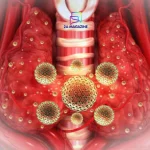Key Takeaways:
- Awareness of common causes of neck pain can aid in prevention and management.
- Understanding your lifestyle’s impact on neck health is crucial for long-term well-being.
- Proactive measures can alleviate current discomfort and prevent future issues.
Table of Contents:
- Introduction
- Poor Posture
- Muscle Strain
- Herniated Discs
- Degenerative Disc Disease
- Osteoarthritis
- Conclusion
Introduction
Neck pain can be a discomfort and nuisance, affecting daily activities and overall quality of life. While the causes of neck pain can be varied and complex, understanding the most common reasons can help you address and alleviate the issue effectively. This article delves into the top five causes of neck pain, offering insights into how they occur and what can be done to manage them.
Poor Posture
Poor posture is one of the most prevalent causes of neck pain in today’s technology-driven world. Whether you’re hunching over a computer at the office or spending hours scrolling through your smartphone, these positions can strain the muscles and ligaments in your neck. This continuous strain leads to misalignment and muscle fatigue, resulting in pain. Adjusting your posture is often the first step towards relief for those experiencing Las Vegas neck pain or similar discomforts. Being mindful of your posture when sitting, standing, and sleeping is paramount. Ergonomic adjustments, such as using a chair with proper lumbar support, positioning your computer screen at eye level, and taking regular breaks to stretch, can dramatically reduce neck strain.
Muscle Strain
Muscle strain often occurs due to repetitive movements or lifting heavy objects without proper form. Even simple actions, like turning your head too quickly or sleeping awkwardly, can lead to muscle strain. Symptoms typically include stiffness, limited range of motion, and localized pain. Prevention lies in practicing good posture and knowing how you use your body throughout your daily routines. Regular exercise, particularly activities that strengthen the neck and shoulder muscles, can also help prevent muscle strain. When experiencing muscle strain, applying heat, doing gentle stretches, and resting the affected area can aid in recovery.
Herniated Discs
A herniated disc occurs when the inner gel-like core of a spinal disc protrudes through its more rigid outer layer, often compressing adjacent nerves and resulting in pain. This condition, known as cervical herniation, is especially prevalent in the neck region and can cause sharp pain, numbness, or tingling in the neck, shoulders, and arms. Herniated discs are commonly caused by aging, wear and tear, or sudden impacts of falls and accidents. Managing this condition often involves a combination of rest, physical therapy, pain relievers, or, in more severe cases, surgery. Protecting your spine by maintaining a healthy weight, engaging in exercises to strengthen back muscles, and avoiding activities that strain the spine are essential for prevention.
Degenerative Disc Disease
Degenerative disc disease is another leading cause of neck pain. As we age, the spinal discs naturally dehydrate and lose their flexibility, which can decrease the discs’ height and reduce the ability to cushion the spine. This degeneration can result in pain and discomfort as the vertebrae rub together. The condition is a common aspect of aging, but not everyone experiences pain. For those who do, it often presents as a chronic, dull ache that can flare up with specific activities or positions. While degenerative disc disease cannot be entirely prevented, some measures can slow its progression. These include staying active, maintaining a healthy weight, and avoiding tobacco products. Treatments range from non-invasive therapies like heat or cold therapy, physical therapy, and medication to, in some cases, surgical intervention.
Osteoarthritis
Osteoarthritis, often called wear-and-tear arthritis, affects the neck when the cartilage protecting joints wears down over time. This breakdown can lead to the formation of bone spurs, resulting in pain and reduced mobility in the affected area. Symptoms may include stiffness, especially in the morning, and a limited range of motion. While osteoarthritis is expected as we age, genetics, previous injuries, and obesity can increase its likelihood and severity. Managing osteoarthritis involves staying active, doing exercises that keep muscles strong and flexible, and using medications to manage pain. Maintaining a healthy diet and weight also plays a crucial role in reducing the severity of symptoms and preserving joint function.
Conclusion
Neck pain is a common issue, but understanding its underlying causes can empower individuals to take control of their health and work towards alleviation. By recognizing the effects of poor posture, muscle strain, herniated discs, degenerative disc disease, and osteoarthritis, one is better equipped to implement preventive measures and find relief. Engaging in regular physical activity, practicing good ergonomics, and seeking appropriate medical advice when necessary are cornerstones of managing neck pain. Taking proactive steps today can help reduce the impact of neck discomfort tomorrow, leading to a more active and pain-free lifestyle.







